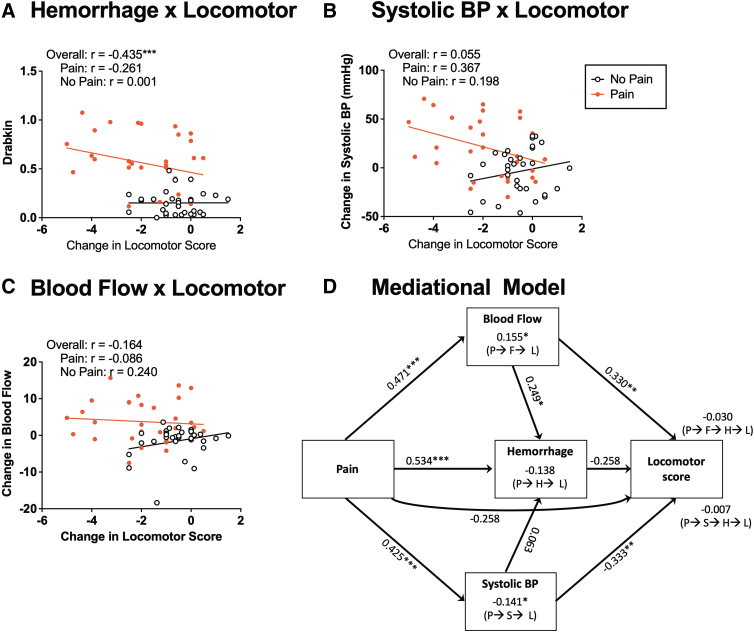FIG. 10.
Relationship among hemodynamic changes, hemorrhage, and locomotor function. There was an overall effect of hemorrhage on locomotor recovery (A). Systolic BP was significantly correlated with locomotor recovery in animals receiving pain input (B). Blood flow was not correlated with locomotor recovery (C). A mediational analysis showed that pain (P) input drove blood flow (F), hemorrhage (H), and systolic BP (S). Increased blood flow also drove hemorrhage. Both blood flow and systolic BP affected locomotor performance (L), but in opposite directions. The decline in locomotor performance was moderately predicted by hemorrhage and a direct effect of pain input, both ps < 0.075. The values along each line indicate the standardized effect sizes (beta values). Indirect effects are indicated above the labels set in parentheses indicating the path. (D). Asterisks indicate significance differences between groups (*p < 0.05, **p < 0.01, ***p < 0.001).

